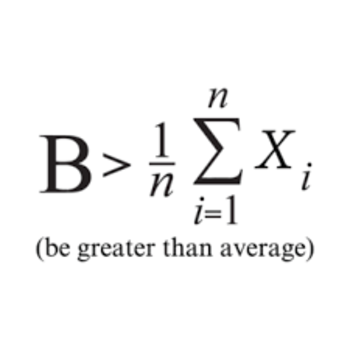Chemistry A/As Level question? HELP!
Calcium is one of the Group 2 metals. It is biochemically important and its most common compounds are important in many industries. When exposed to air calcium readily oxidises to calcium oxide.
Calcium reacts readily with water to form calcium hydroxide and hydrogen.
The equation for the reaction is as follows:
Ca(s) + 2H2O(l) → Ca(OH)2(aq) + H2(g)
In two linked experiments to find the relative atomic mass of calcium, 0.51 g of the metal was first added to water and 300 cm³ of hydrogen was collected. Assume that 1 mol of gas occupies 24 dm3 at room temperature.
a i Calculate the number of moles of hydrogen produced. Show your working. [1]
ii Calculate the number of moles of calcium present in the reaction. Show your working. [1]
iii Hence calculate the relative atomic mass of calcium. [2]
The calcium hydroxide produced was then titrated against standard 1.00 mol dm−3 hydrochloric acid. The equation for this reaction is:
Ca(OH)2(aq) + 2HCl(aq) → CaCl2(aq) + 2H2O(l)
In this particular experiment the volume of hydrochloric acid required to neutralise the calcium hydroxide was 25.80 cm3.
b i Showing all your working, calculate the number of moles of hydrochloric acid used. [1]
ii Calculate the number of moles of calcium hydroxide present and hence the
number of moles of calcium. [2]
iii Calculate the relative atomic mass of calcium using these results. [2]
c There are six naturally occurring isotopes of calcium. Their relative isotopic masses and percentage abundances are shown in the table below. Use these values to calculate the relative atomic mass of calcium. Give your results to 2 decimal places. [3]
Relative isotopic mass 40 42 43 44 46 48
Percentage abundance 96.97 0.64 0.15 2.06 0.003 0.19
d i Which of the two laboratory methods (either that in part a or in part b above) was the more accurate? Explain your answer. [1]
ii Apart from human error and that due to apparatus, give a possible reason for any inaccuracy in the results. [1]
Total = 14
Calcium is one of the Group 2 metals. It is biochemically important and its most common compounds are important in many industries. When exposed to air calcium readily oxidises to calcium oxide.
Calcium reacts readily with water to form calcium hydroxide and hydrogen.
The equation for the reaction is as follows:
Ca(s) + 2H2O(l) → Ca(OH)2(aq) + H2(g)
In two linked experiments to find the relative atomic mass of calcium, 0.51 g of the metal was first added to water and 300 cm³ of hydrogen was collected. Assume that 1 mol of gas occupies 24 dm3 at room temperature.
a i Calculate the number of moles of hydrogen produced. Show your working. [1]
ii Calculate the number of moles of calcium present in the reaction. Show your working. [1]
iii Hence calculate the relative atomic mass of calcium. [2]
The calcium hydroxide produced was then titrated against standard 1.00 mol dm−3 hydrochloric acid. The equation for this reaction is:
Ca(OH)2(aq) + 2HCl(aq) → CaCl2(aq) + 2H2O(l)
In this particular experiment the volume of hydrochloric acid required to neutralise the calcium hydroxide was 25.80 cm3.
b i Showing all your working, calculate the number of moles of hydrochloric acid used. [1]
ii Calculate the number of moles of calcium hydroxide present and hence the
number of moles of calcium. [2]
iii Calculate the relative atomic mass of calcium using these results. [2]
c There are six naturally occurring isotopes of calcium. Their relative isotopic masses and percentage abundances are shown in the table below. Use these values to calculate the relative atomic mass of calcium. Give your results to 2 decimal places. [3]
Relative isotopic mass 40 42 43 44 46 48
Percentage abundance 96.97 0.64 0.15 2.06 0.003 0.19
d i Which of the two laboratory methods (either that in part a or in part b above) was the more accurate? Explain your answer. [1]
ii Apart from human error and that due to apparatus, give a possible reason for any inaccuracy in the results. [1]
Total = 14
2 Answers
Very long answer incoming!
Here is what I get:
Explanation:
a
(i)
We are given that:
1 mol=
Hence,
(ii)
From (i) we find that we developed 0.0125 mol of
(iii) using the molarity equation:
n=0.0125 from (ii) and m=0.51 from the orignal question.
b
(i)
Using the concentration formula:
concentration is given of the acid-
(ii)
Calcium hydroxide and Hydrochloric acid react in a 1:2 ratio, so we needed twice as many moles of
This is also the number of moles of Ca in
(iii)
I'm assuming this was a continuation of the first experiment- so we know that we added 0.51 g of Ca to begin with, and through calculation, in b(i) and (ii) we found that we know had 0.0129 mol of Ca.
Molarity equation again:
c
Multiply the masses with their respective percentages and add:
d
(i)
According to this Booklet the molar mass of calcium is 40.08 grams per mole (table 6).
We can find the experiment with smallest percentage error by using our experimental values.
%Error=I(Theoretical value-experimental value)/(theoretical value) x 100I
Experiment a:
Experiment b:
So experiment b was slightly more accurate as it had a lower percentage error.
(ii)
One possible reason behind the discrepancies can be that the calcium sample contained impurities. So the 0.51g of Ca not only contained Ca but some other traces that did not react.
WARNING! A REALLY REALLY LONG ANSWER AHEAD!!!
Here's what I get.
Explanation:
a) i)
According to your question,
Then,
So,
So,
ii)
The equation for the reaction is
The reaction produced 0.012 mol
iii)
b) i)
So, as the molarity of the
ii)
Now, It's time for some stoichiometry.
First, we will check the equation.
So, per
So,
and
iii)
c)
The relative atomic mass of an element is the weighted average of the relative atomic masses of its isotopes.
That is, we multiply the relative atomic mass by a number that represents the relative abundance of the isotope.
We get
Note: The answers in Part (a) can have only two significant figures because that is all you gave for the mass and volume.
The answer in Part (c) can have only two significant figures because that is all you gave for the isotopic masses.
d) i)
From isotopic abundances, the "true" value of
The titration method gave a more accurate value because it agrees with the "true" value.
ii)
The main reason why Part a) is less accurate it that it is more difficult to measure accurately the volume of a gas than it is to measure the volume of a liquid.



